
The Eagle’s Nest
Located on the Naphtali Plateau only 20 km south of the Sea of Galilee, and 500m above the Jordan, the crusader castle dates back to the 12th century AD. It dominated the entrance road to the crusaders’ Kingdom of Jerusalem and secured all operations in the strategic Jordan Valley and the so-called Via Maris. Strategically, Belvoir faced Gilead, (Today’s Jordan) guarding the eastern entrance to the Crusader Kingdom of Jerusalem and the roads leading to the Galilee region.
According to many Tour Guides, the Belvoir Fortress could be considered one of the north’s best kept secrets in Israel.

Designed to ward off invaders by using the most advanced military architecture of the time, the fortress provided strong combat positioning as well as an amazing view of the surrounding area.
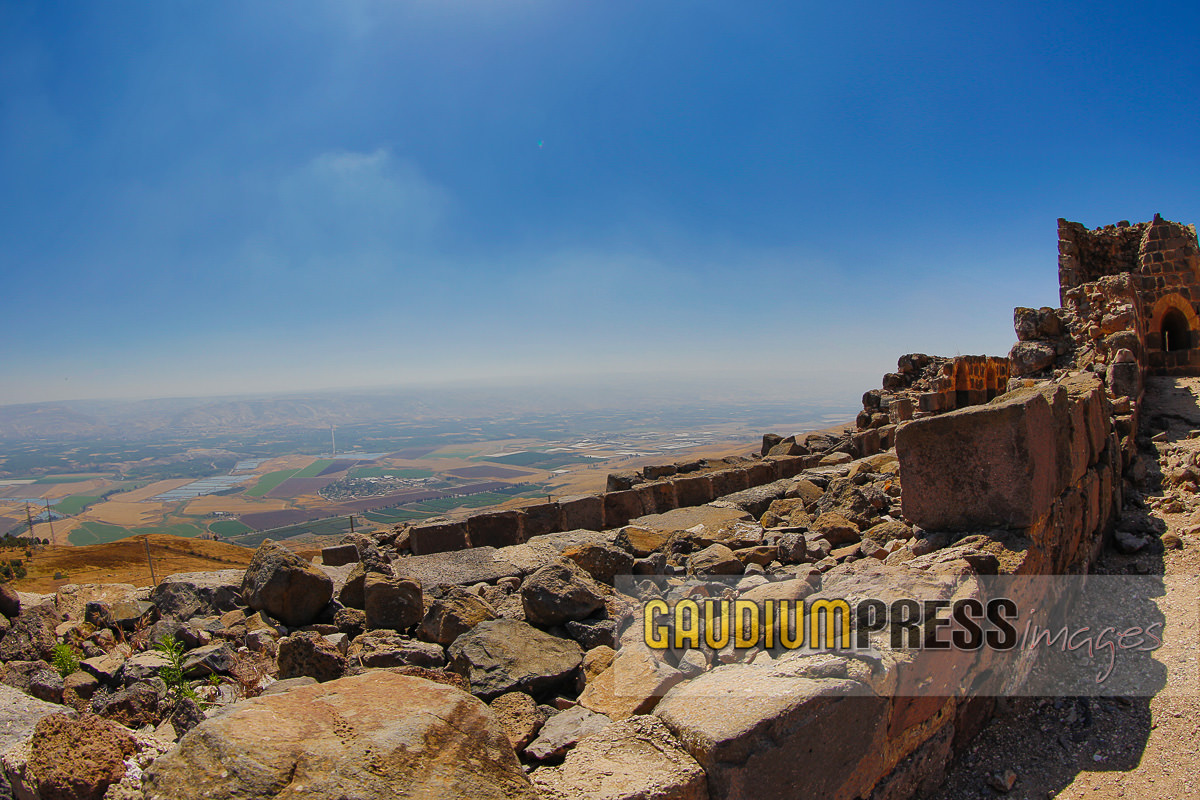
The view is fascinating: while exploring the fortress visitors can take in the striking views over the Jordan Valley, the Sea of Galilee, and up through the Golan.
Belvoir Castle is in fact, the most complete Crusader fortress in Israel.
History of Belvoir Fortress
The original structure was simple and was owned by a French nobleman named Velos who resided in Tiberias.
Velos sold the Castle to the Order of the Hospitallers in 1168, by today’s approximate sum of USD$200,000. The knights, in turn, built a formidable fortress, following the most advanced military architecture of the time. In short, the hospitallers had built a formidable structure outfitted and ready for battle. In 1182, Baldwin IV, king of Jerusalem, based his army at Belvoir Castle to confront Saladin and his Ayyubid army. The Crusaders successfully repelled Saladin invading effort.
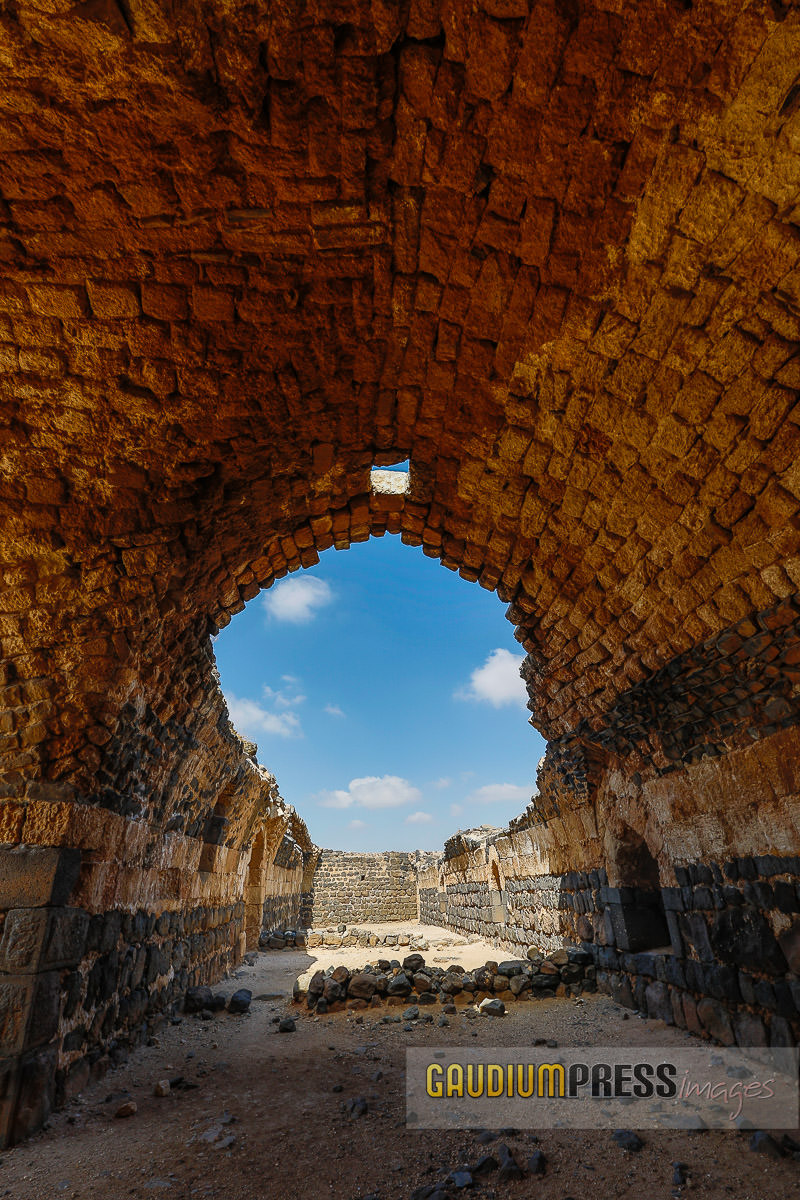
Visiting Belvoir Fortress
Belvoir consisted of an outer square fortress which enclosed a smaller, inner square fortress. Its thick walls were built of large basalt stone pieces held together by U-shaped iron joints. More importantly, well-protected cisterns designated for the storage of rainwater guaranteed the water supply in times of prolonged sieges.

Belvoir – Fair View – was properly named by the Crusaders. In Hebrew it is known as Kohav Hayarden – Star of the Jordan – which preserves the name of Kohav, the Jewish village which existed nearby during the Roman and Byzantine periods. The Muslims called it Kaukab al-Hawa – Star of the Winds.
A formidable Military Structure
We take the architectural information from a recent article by The Jewish Virtual Library: “The Outer Fortress (110 x 110 m) displayed a huge, external tower surrounded by a barbican (low wall) which controlled the dead space on the slope of the hill, both visually and with firepower.
The main entrance to the fortress was via an outer gateway from the southeastern corner. From here, one proceeded up a paved ramp to the top of the external tower, turned back, and continued to the inner gate of the fortress. This fortified gate was closed with a wooden door covered with metal and locked from the inside with a heavy wooden beam that fit into slots in the doorposts.

A secondary entrance to the fortress was from the west, via a bridge suspended over the moat, which could be raised or destroyed when the fortress came under attack.
A man-made moat, 20 m. wide and 14 m. deep, surrounded the fortress on three sides while the steep slope and the external tower protected its eastern side. The moat was dry and was meant to prevent siege engines, such as battering rams and assault towers, from coming close to the fortifications.
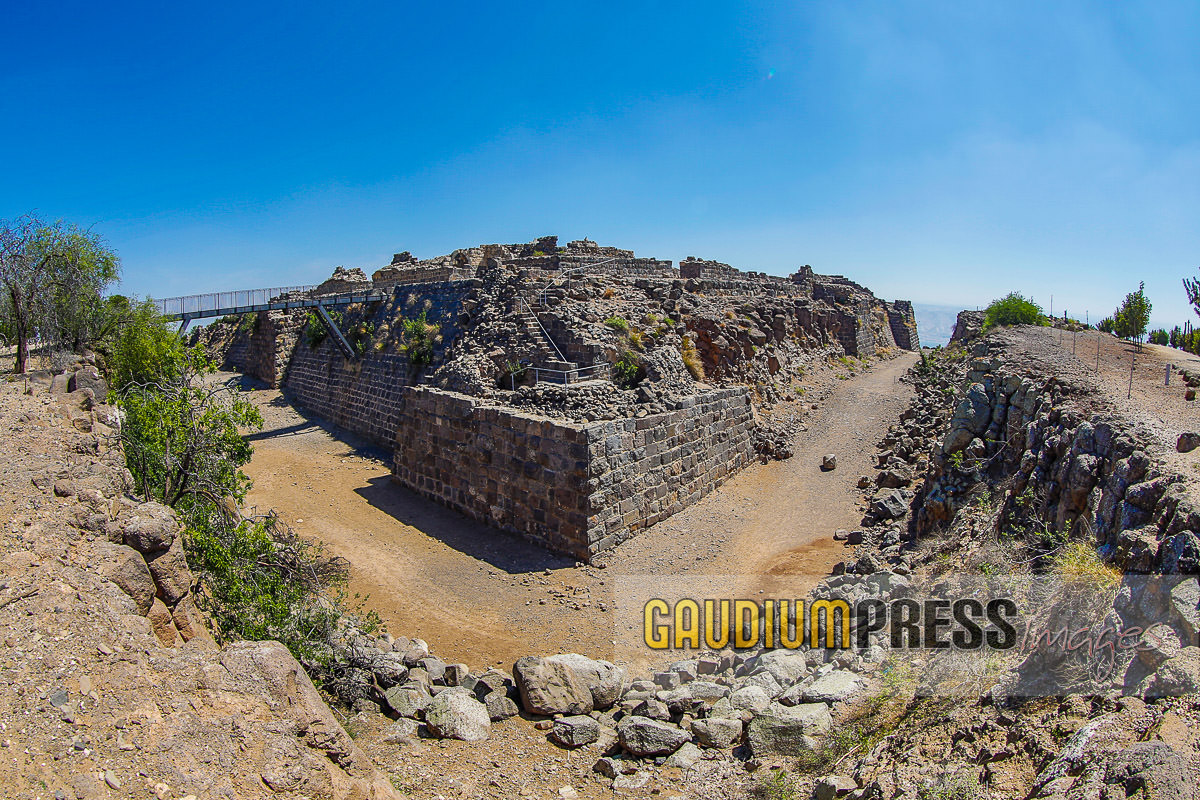
Huge towers rose at the four corners of the fortress, with additional towers between them at mid-point. The broad bases of the slope of the tower towards the bottom of the moat, to prevent tunneling under them. In the upper stories of the towers were loopholes protected by covered recesses. The placement of the towers is such that the entire circumference of the fortress walls could be covered by crossfire.
Almost every tower incorporated sally ports into the moat, with narrow staircases; the steps are unusually high, undoubtedly to make enemy penetration from the outside more difficult.

In the courtyard between the walls of the outer fortress and the inner fortress were large halls covered with vaults. These served as stables, storehouses and living space and gave access to defensive positions on the roofs.
The Inner Fortress
“Inside the outer fortress and separated from it by the courtyard was the inner fortress (keep, donjon). It was a square, 50 x 50 m. structure, two stories high, and surrounded by a wall with towers at the corners. This inner fortress could withstand siege even after the main, outer fortress had fallen into enemy hands. The main entrance was from the west. In its center was an open courtyard surrounded by vaulted spaces which served as refectory, kitchen, meeting hall, stores, living quarters, etc. The upper story served as the command headquarters of the fortress and included the apartments of the knights, as well as a small chapel built of limestone and roofed with cross vaults.”

The fortress of Belvoir was attacked by Muslim forces in 1180. The concentrical set of fortifications withstood and repelled the attack. Following Saladin’s final victory over the Crusaders at the Horns of Hittin in 1187, the siege on the Belvoir Fortress still lasted a year and a half before the defenders agreed to retire in 1189 AD.

in 1217-18 the Muslim rulers dismantled the castle, fearing the reconquest of the fortress by the Crusaders.
The ‘Star of the Jordan’, that formidable fortress of Belvoir, can still be visited today. It is, a silent witness of a glorious past that far from being lost into oblivion, rather lives on, in the golden realms of legend.
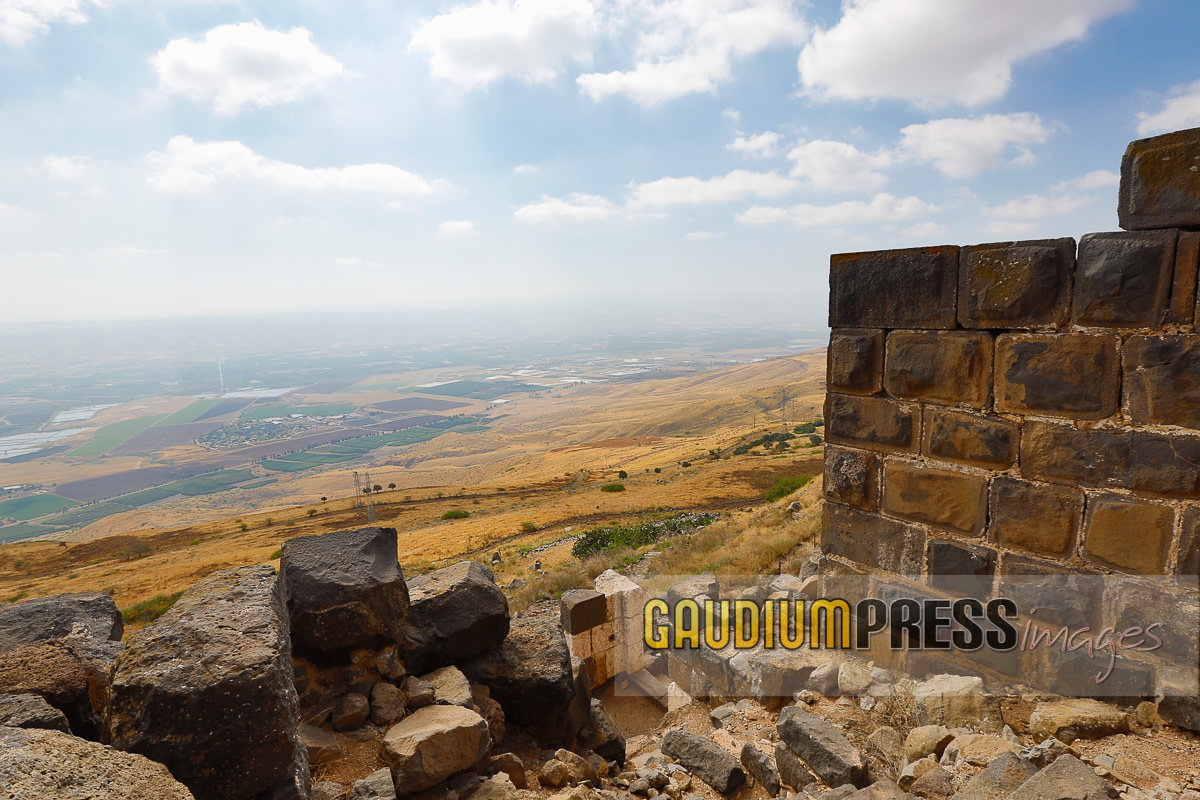
How to get there: The fortress is located in Kokhav Hayarden National Park and the best way to get there is by car. Start on Road 90 heading north from Bet Shean. About 15 km north of Bet Shean, turn left onto Route 717.
Recommended websites:
Kokhav haYarden National Park Check times and admission fees.
____________________
Note: This destination may have COVID-19 travel restrictions in place, including specific restrictions for lodging. Check any national, local, and health advisories for this destination before you book.




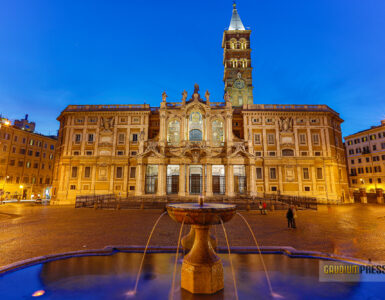















Add comment